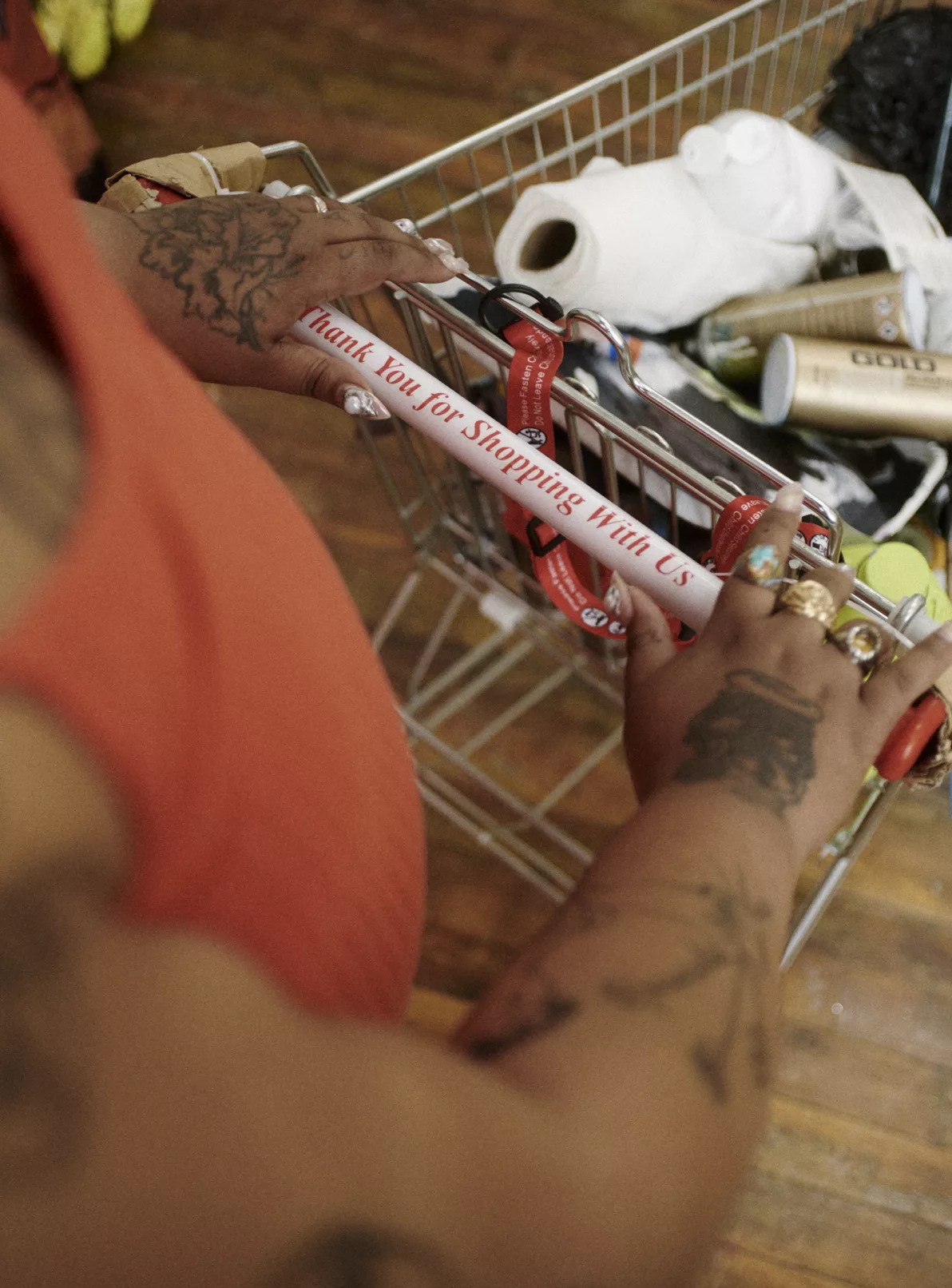The Philadelphia-based artist’s interdisciplinary work embraces corporeality as a stratified record of (only) seemingly lost sensations, feelings and experiences.
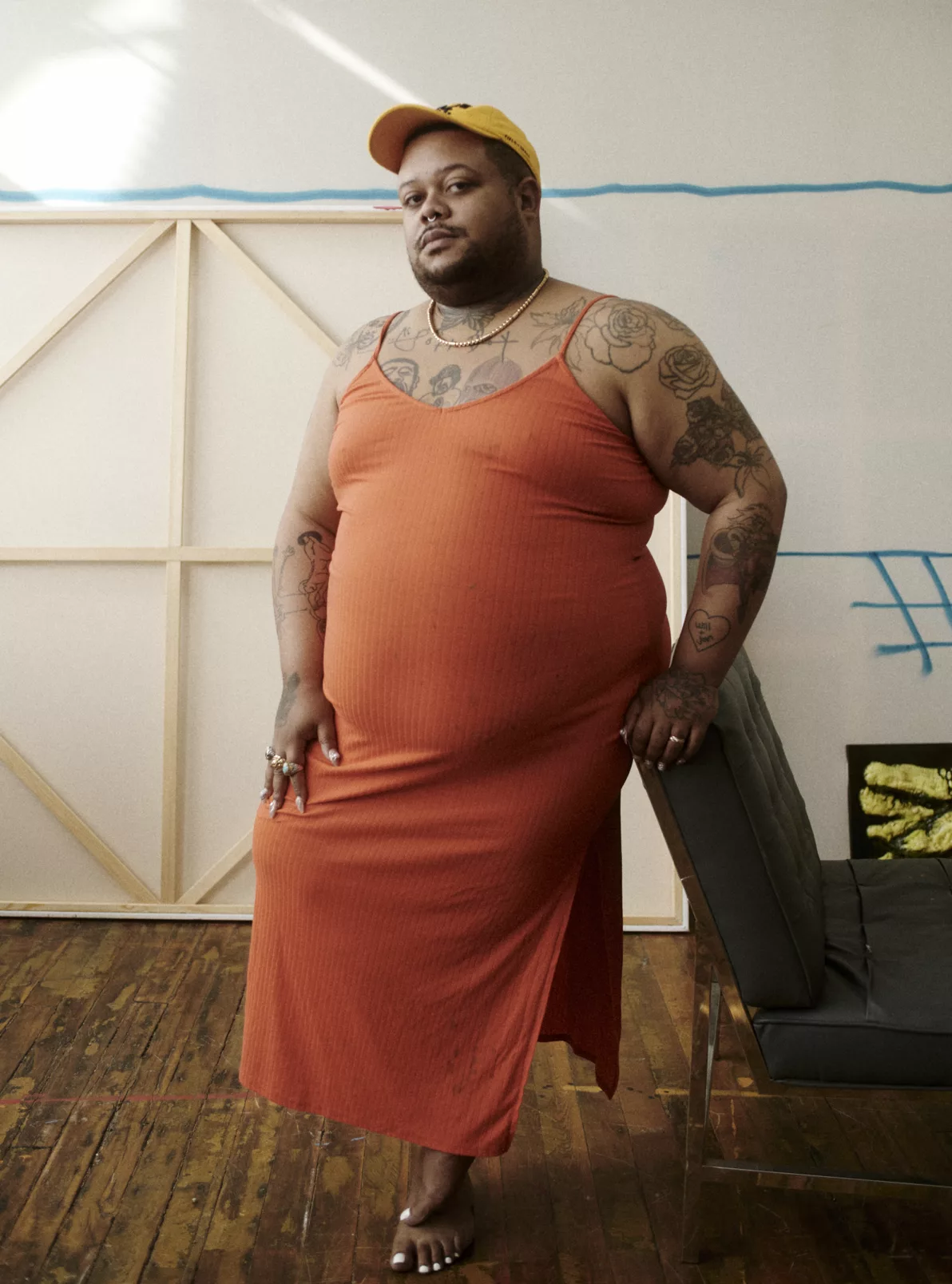
Skin and Substrate is a column dedicated to artists who deal with the corporeal. In this article we investigate JLC’s process through his own words and documentation of his extensive tattoo collection, depicting many of Chase’s own works.
It’s 1:58 pm on a late-August Wednesday afternoon when Jonathan Lyndon Chase joins the Zoom call scheduled for 2 o’clock on the occasion of their interview with Elephant — the artist’s enthusiasm instantly shining through as their radiant face appears on the screen of my old iPhone 8. From the earliest moments of our hour-long conversation, it is clear that Chase doesn’t just look at art as one of the aspects that compose their lived experience, but rather as life in its most uncompromising form, making it impossible for me to examine their personal and creative journey as two separate entities. After all, as the Philadelphia-born creative points out before delving into their craft any further, those two trajectories have always been strictly intertwined for them: Chase’s paths to self-discovery and aesthetic experimentation went hand in hand, feeding, informing and, often, even predicting each other’s next move to this day. While their achievements might have momentarily taken them away from their native Pennsylvania into respected galleries across the US, Europe and beyond, as far as Chase’s artistic awakening goes, it all comes back to their family home.
“When I was a kid, my mother, who is my greatest fan, used to do loads of watercolours and drawings, she also really loved interior design,” Chase says. “Together with my grandmother, who shared the same passions, she was my earliest introduction to visual art.” Counting Japanese animation as well as horror and sci-fi films among their first inspirations, it didn’t take long for Chase to soak up the creative atmosphere permeating their household. “Our place was filled with magazines, photographs and illustrations,” they explain. “I began by copying the images I was more naturally drawn to before gradually finding my own way to figuration.” Whether in school or at their friends’, Chase spent their childhood sketching out the scenes and characters that were trapped in their head, turning every available piece of paper into the backdrop of their most recent story. Although drawing had accompanied them throughout their teenage years, “it wasn’t until the last months of high school, when everyone was getting ready to embark on a different adventure — and mostly going to college — that I realised that art could be more than another hobby for me”, the artist recalls.
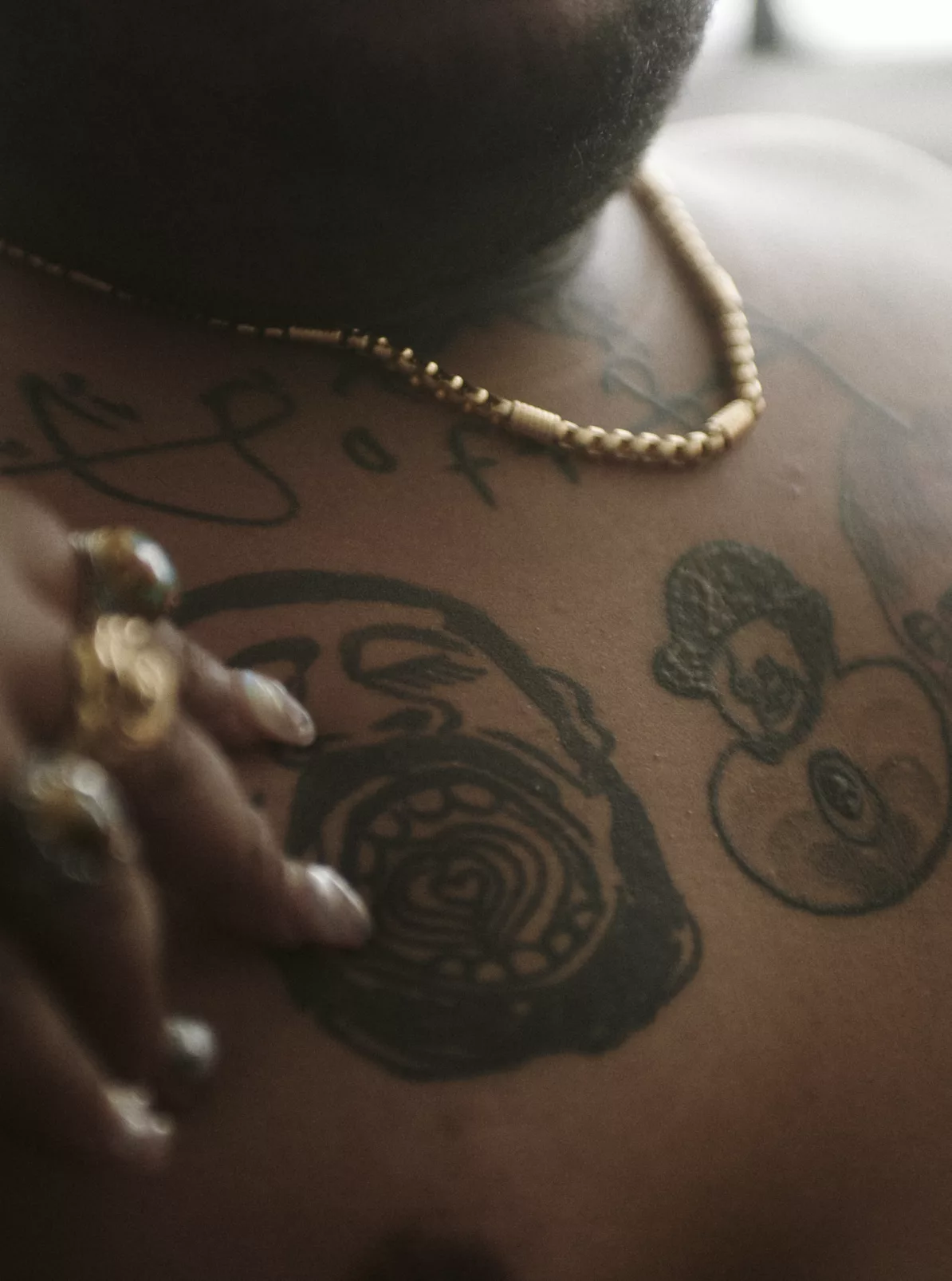
Up until that moment, traditional education had never really appealed to them: suddenly, their creative inclination was presenting them with a new perspective. “At the time, I was attending an after school programme run by the Pennsylvania Academy of the Fine Arts which turned out to be a real gamechanger,” Chase says. Having discovered it via an art teacher of theirs who had supported them since day one, “the programme allowed me to envision how my future could look like if I were to pursue art more seriously”, they explain. From there, things became increasingly clearer: Chase went on to study Fine Arts at Philadelphia’s University of the Arts (2013) before earning their MFA at the very academy that had initiated them to artmaking in 2016. Their graduation corresponded to the surfacing of a dilemma: “is art something I could explore professionally?” A question Chase answered implicitly through the delineating of their eclectic practice, which encompasses anything from drawing, painting and sculpture to photography, video, installation and writing.
While differing in form, the largest part of their production is brought together by an emphasis on portraiture. The same is true of Chase’s painting inspirations who, ranging from the unsettling canvases of Francis Bacon to Harlem reinassance artists Jacob Lawrence and Romare Bearden as well as Henry Taylor, led to their fascination “with the body and its figurative representation”. In each of these mavericks’ artworks, the human figure is charged with meaning which transcends the corporeal silhouettes of the people portrayed in them, transforming the body into a theatre of social, cultural, political and psychological revolt. Here, the emotional and physical tensions embodied by the corporeal become a metaphor for wider struggles, narratives and mythologies revolving around the human condition and the African-American experience. “Finding out about the existence of respected, notable Black artists represented a turning point for my artistic craft,” Chase says. “Seeing that other people who looked like me had stepped into the complex, mysterious world that is art and shaken its foundations convinced me that I was doing the right thing.”
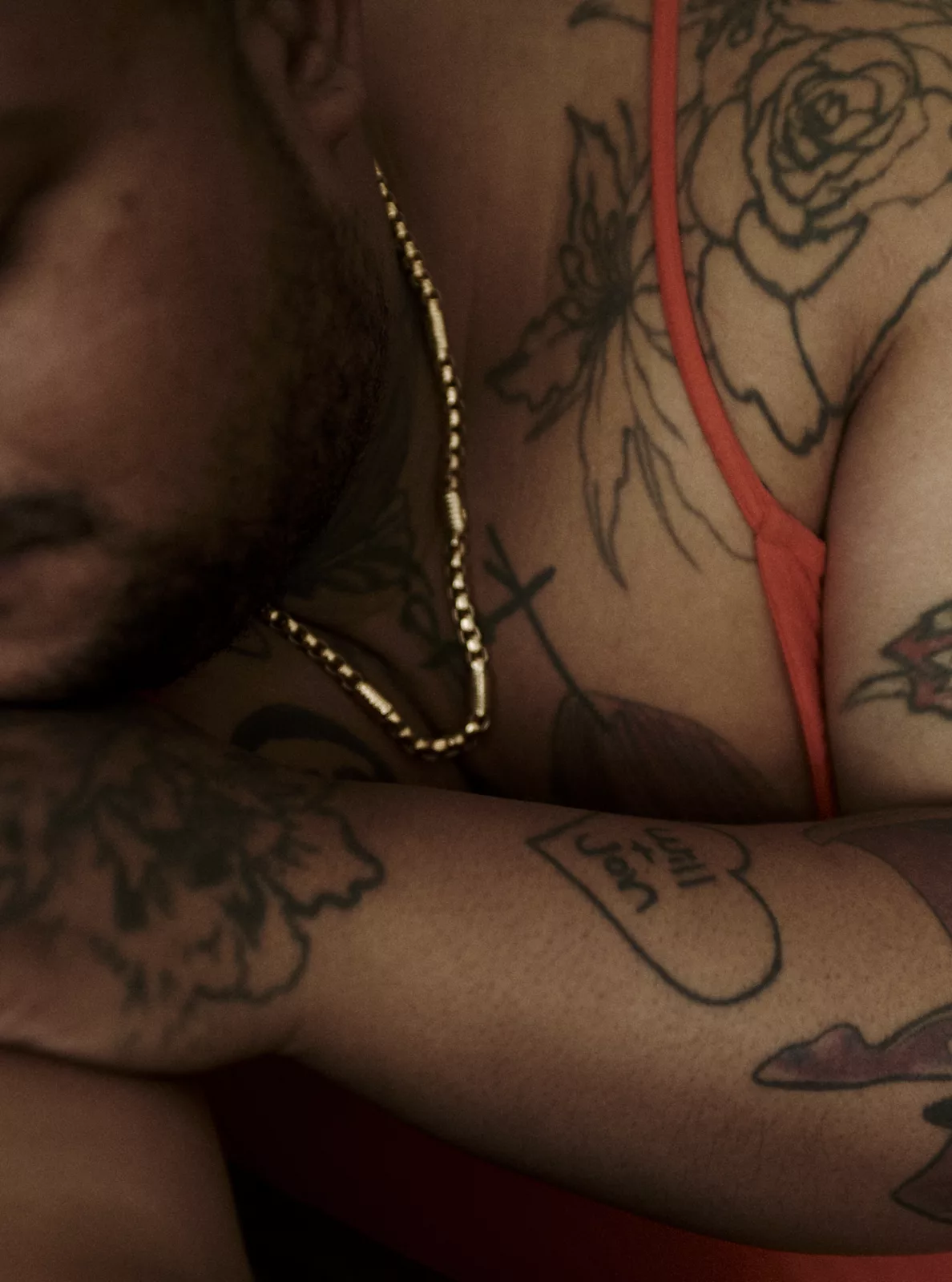
Much like their practice, the creative brainstorming that goes into Chase’s studio time isn’t limited to any specific medium. “I am big into Hip Hop and rap too,” the artist explains. “The influence of acts like Missy Elliott recurs in many of my pieces: she is constantly challenging gender norms and has an Afrofuturistic way of approaching the making of her videos — something that makes her and Busta Rhymes two of my favourite music artists.” When not tuning in to the soul-soothing sound of John Coltrane’s saxophone, Chase can be found immersing themselves in the poetry of Maya Angelou and Danez Smith: two authors whose ability to straddle multiple forms of self-expression speaks directly to their interdisciplinary understanding of art. “I see all of my mediums of choice as interconnected,” they say. Taking collage and photography as its reference points, Chase’s oeuvre expands into drawings, paintings, visual and sound installations as well as soft sculptures to stimulate all the senses. “Every discipline complements the others,” the artist adds. “Each medium enables me to reach the audience in a different way, narrate different stories and tackle different topics.”
Whether portrayed nude or adorned in streetwear clothes, Chase’s work has always fronted the body. As they argue while Zooming from New York’s Artists Space — the gallery hosting their latest solo exhibition, his beard is soft, my hands are empty — “our bodily vessel is what allows us to interact with the space around us; it is a fundamental part of the human experience”. For Chase, fixing their gaze onto “the countless shapes and ways in which the human form presents itself”, especially in romantic or openly carnal situations, acquired a therapeutical function. “It took me a long time to come to terms with my body image and accept that I am a fat person, but today I have finally learnt how to love myself,” the multimedia artist says. “Taking corporeality centre stage in my practice has helped me build confidence, showing me new ways to embrace my skin.” Chase’s deeper, renovated connection to themselves paved the way for more authentic interactions with others. “While we all look different, it is important to remind ourselves that we share more than we think,” they add. For starters, we are all victims of social media which, with their perfective filters and unattainable beauty standards, have given way to a mental health pandemic.
“In a world where discerning the true from the artificial is getting increasingly harder, portraying a range of real bodies — bodies with blemishes, pimples, stretch marks and scars — has become a moral obligation,” Chase says. In stark contrast to their algorithm-dictated depictions, the figures outlined by the artist are not intended to be in any way “palatable”. Instead, they strive to represent anyone whose body shape falls outside of the predominant canon, rejecting idealism altogether. “Bodies and sex are, at once, beautiful and gross, and that is how things should be,” Chase explains. “People are ambivalent: we laugh, then we cry. We are complicated and multidimensional, not monolithic, and that is exactly what I am aiming to render through my work.” A proud member of the Black, queer community, the artist also turns to his craft as a means of remedying stereotypes related to Blackness and homosexuality. “Taking the opportunity to have a say in the representation of queer, Black people was one of the reasons that prompted me to become an artist,” Chase says. “For too long, I just wasn’t seeing what I wanted to see out there: toxic masculinity, fatphobia and discrimination are issues that exist even within the LGBTQI+ community, meaning that unless you look how you are supposed to look, you risk being pushed to its fringes.”
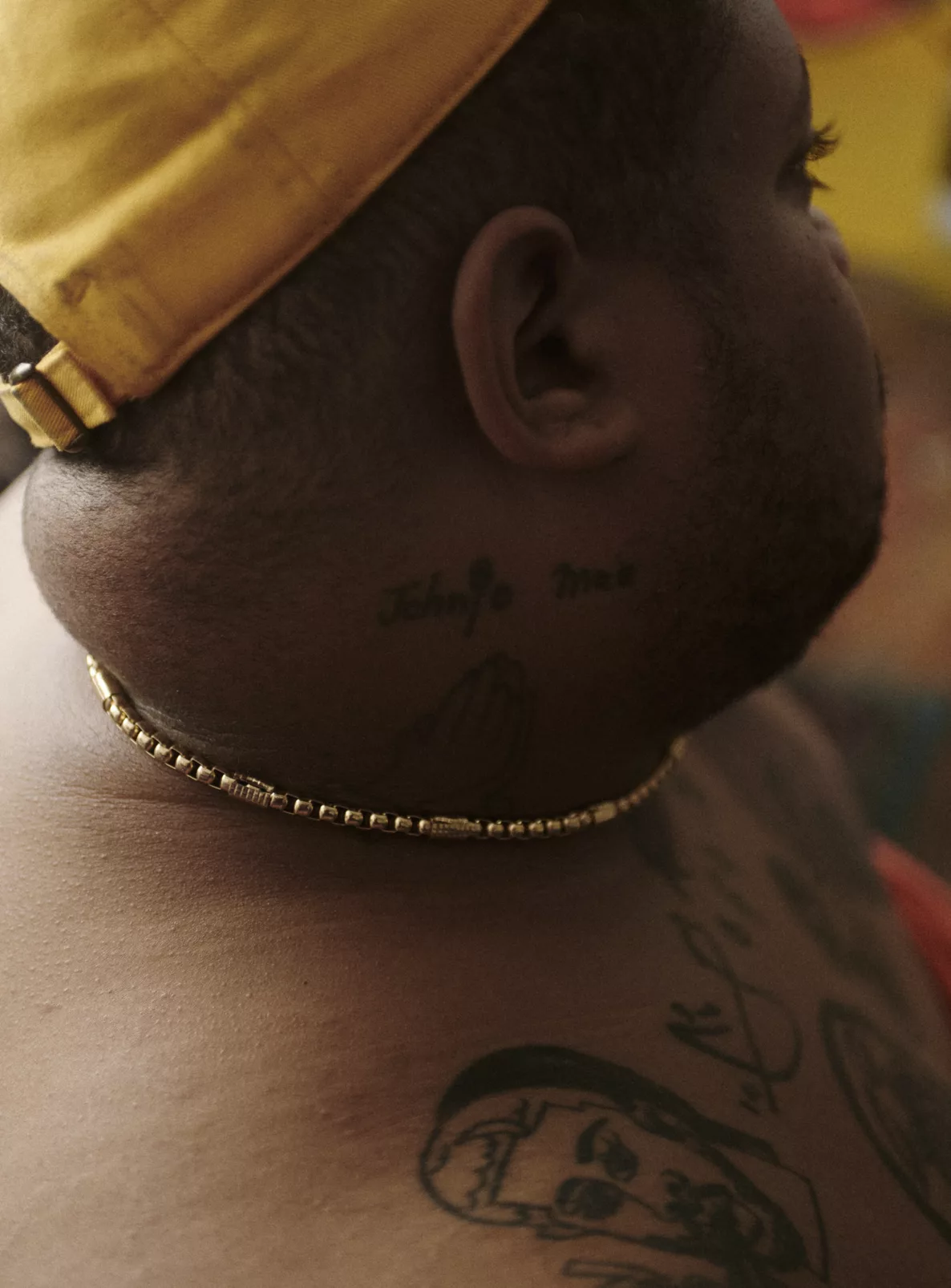
Stumbling across Bessel van der Kolk’s 2014 book The Body Keeps the Score provided the artist with a new lens through which to approach, and interpret, their carnal artworks. “The Body Keeps the Score looks at how trauma affects our growth and development — our world lens on things — and I can definitely see myself in it,” Chase says. “My visual vocabulary, the perception I have of my body and the way I nurture it have evolved so much since I first started making art, but I am aware of the ‘signs’ that the past has left behind.” Raised in a Baptist household, the creative recounts that, while they do not identify that way anymore, spirituality still shows in their practice. Chase’s bold, artistic renditions of skin, flesh and desire subtly examine “the ways in which religion determines our relationship to the body, be it our own or others’”, they say. Just like the artist’s production carries traces of their journey to self-acceptance, each one of their works acts as a mirror into the subjective dimension of their vibrantly captured muses. In Chase’s canvases, the corporeal vessel is conceived as a stratified record of bygone sensations, feelings and experiences in a relentless rumination of (only) seemingly lost moments; the epidermis, skin’s outermost layer, serves as a permeable membrane granting us the ability to absorb the sensorial, physical and emotional stimuli around us — a thin bridge between our inner and outer worlds.
“Skin is a way for me to be open about mental health and what it is like to live as a person with bipolar disorder,” Chase explains. “Including additional textures in my artworks, such as beads, glitters, makeup or dirt, enables me to mimic the skin’s ‘memory’ — what the body has gone through and internalised. We are constantly taking stuff in without necessarily noticing, our flesh and bones being our only witnesses; my work wants to address that.” Reflecting the artist’s interest in the different stages of the human experience, their production takes life, death and their overlaps as its thematic core. “The multiple visual layers and transparencies in my rendition of figures strive to express the passing of time,” Chase says. “Just because a person is presented in their entirety in an artwork of mine, that doesn’t mean that each segment of their body ‘belongs’ to the same moment in time: in my work, past, present and, often, future collide, sparking meditation on ideas such as memory, somatic absorption and healing.” Strikingly portrayed through an “intuitive” approach to colour, the artist’s subjects become a testament to fleeting states of mind.
If there is a painting that sums up Chase’s exploration of the body, that must be Quiet Storm (2016). Developed through acrylic, oil stick, crayon, marker, glitter and spray paint on canvas, this intimate scene shows two people as they kiss in bed, their limbs entangled in a soft embrace. While at first glance, the passion running through the subjects’ bare figures might steal all of the viewers’ attention, when looking carefully, it is clear that, without such a meticulously structured composition, the artwork wouldn’t be as powerful. Its protagonists lay under some bedsheets, which confer their bodies a transparent quality, rendered by Chase in a warm, pastel yellow. Despite their heads being “framed off” from the rest of their figure, the two are, somehow, still connected. On the left-end side of the image, we see a lamp which, together with a casual T-shirt, one of the protagonists’ white Terry socks and scattered hints at bedroom furnishings, conveys a homely feel to the canvas. Below the lovers’ feet are roses, above their infatuated heads, thunder and lighting. “What I like about this painting is its sculptural essence,” Chase says. “It talks about something we can easily relate to: the window at the back stands for that ‘head-in-the-clouds’ sensation that comes with being in love, the storm captures their intense mental, physical and emotional bond.”
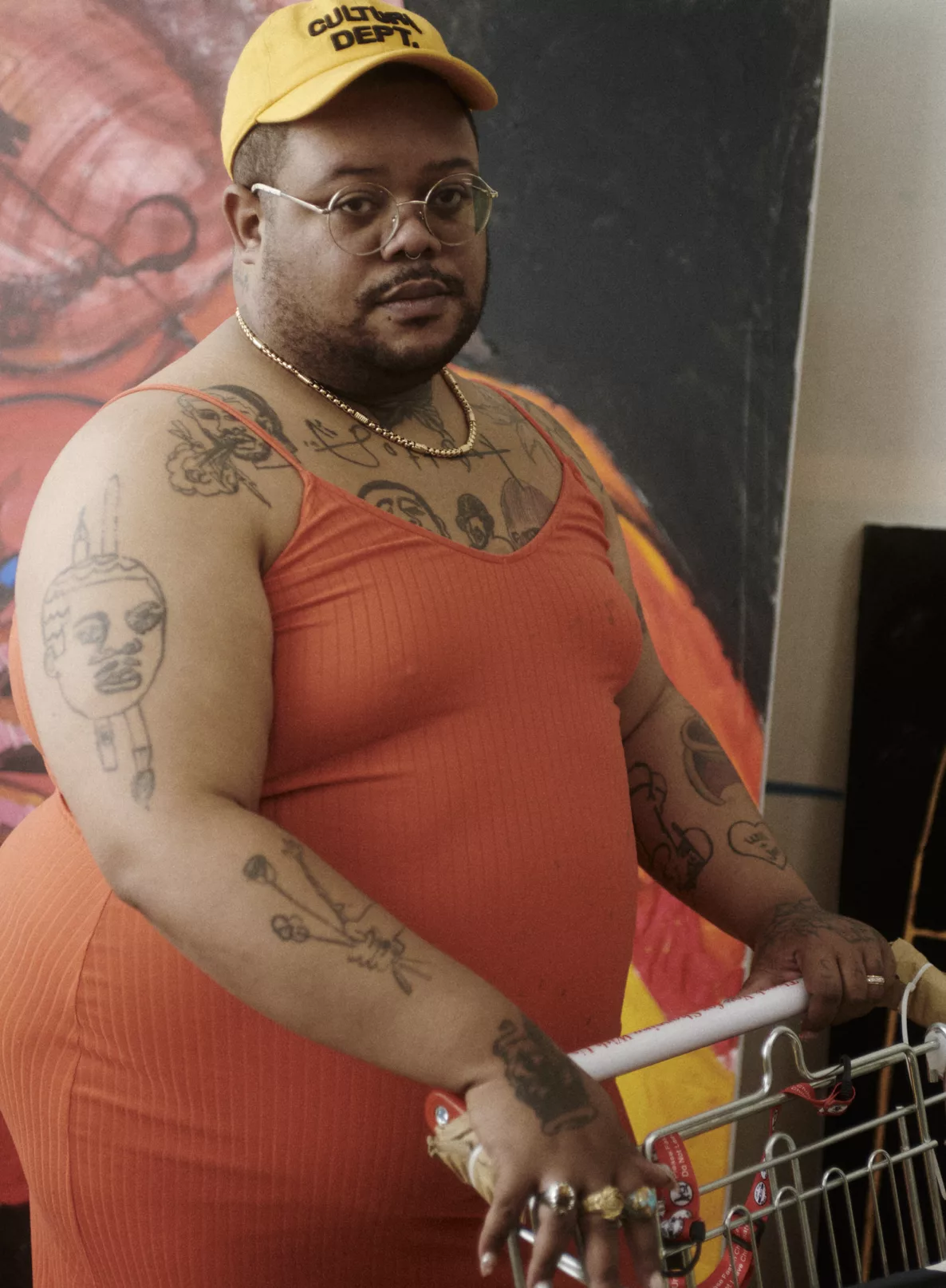
Domesticity, intended as the ensemble of traditions, behaviours and objects that make up our everyday life, imbues a great portion of Chase’s artistic offering. Temporarily breaking with the queer lust-inspired leitmotif taking over most of the artist’s exhibitions — from the more dated Rosebud (Lord Dudd, Philadelphia, 2016) to Now I’m home, lips that know my name (Sadie Coles, 2023), their first solo show in the UK — Chase’s latest venture sees them examine the equivocal function that barbershops fulfill within the Black community through a queer lens. “For his beard is soft, my hands are empty, I wanted to focus on the relationship between hair, self-care rituals and romance by chronicling the story of a group of Black, queer folks getting ready for a date night,” they say of their ongoing exhibition, featuring paintings, large-scale, soft sculptures and “multisensory” installations. “Generally speaking, the barbershop is a safe space for Black people, but this isn’t necessarily true for all of us.” By transporting their usual subjects from the comfort and secludedness of their homes into the public, Chase aimed to reclaim a place intrinsically linked to the collective imaginary of Blackness for each and every member of the Black, LGBTQI+ community.
Similarly, their forthcoming, unannounced group show at the Milanese gallery Giò Marconi will ponder the relationship between femininity and the home through the archetype of “the mother-boy”. Presenting a new body of work by Chase spanning sculpture, video, painting and drawing, “the exhibition will immerse viewers into the universe of supermarkets and the kitchen”, they say, adding that “that is everything that can be unveiled for now”. Besides continuing to expand their visual and writing practice — Wild Wild Wild West / Haunting of the Seahorse, the artist’s debut book, came out in 2020 — in the works for Chase, there is a project that has been brewing since their early teenage years. “I grew up playing lots of videogames and, while the industry’s popularity has hit the mainstream over last few years, so much work still needs to be done to ensure that videogames are inclusive for everyone,” they explain. “There aren’t many Black developers getting the attention they deserve, let alone Black, queer creators and developers or women, which is something I would love to try and change in the near future.”
Among Chase’s greatest achievements so far stands out their inclusion in Young, Gifted and Black: A New Generation of Artists (2020), a 256-page-long compendium spotlighting over 30 of the best contemporary artists of African descent. Edited by writer, editor and curator Antwaun Sargent — the mind behind the critically-acclaimed volume The New Black Vanguard: Photography Between Art and Fashion (2019) — the book dives into the family collection of trailblazing collectors Bernard I. Lumpkin and Carmine D. Boccuzzi, two personalities known for their unceasing dedication to the championing of Black, emerging creatives in and outside of the museum. An opportunity Chase describes as deeply surreal. “The launch of the book has got me thinking about the Harlem Renaissance and how our ancestors united to rewrite history for themselves,” they say. “I am eternally grateful to Bernard and Carmine for allowing me to be part of a volume documenting this specific generation of artists: I wish that when I was younger, there was a book like this one I could look at, which makes it all more exciting considering what its pages will mean for the Black artists of tomorrow.”
Written by Gilda Bruno
